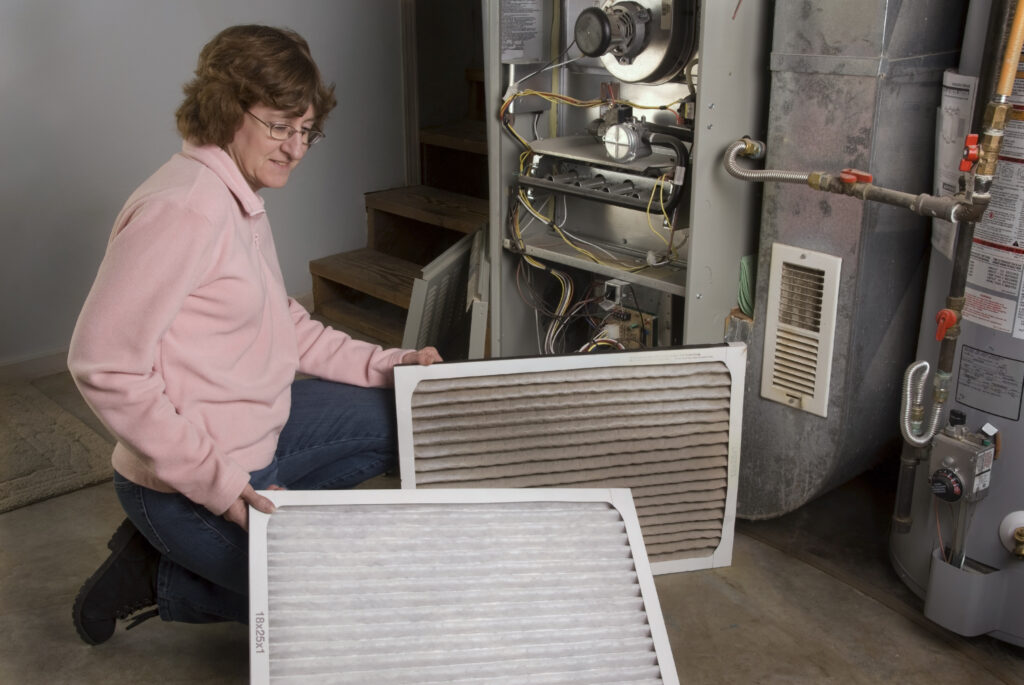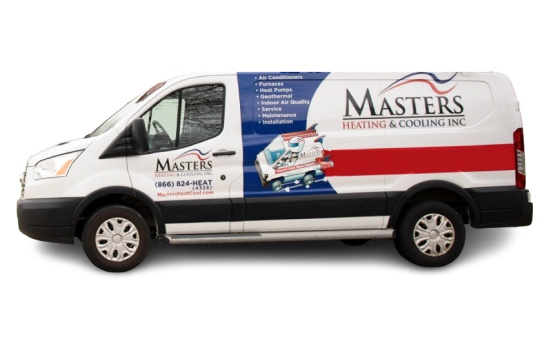Roof snow melt can cause ice dams to form around the edges of your roof.
These can be difficult to remove, as they’re out of reach. They can also be dangerous to remove since working at the top of a ladder in ice and snow is tricky.
In fact, even if you remove the snow, you might be fighting a losing battle against your HVAC system.
That’s why it’s a good idea to call out an HVAC professional for help if snow is causing you problems.
But what’s the link here? Here’s what you need to know about roof snow melt and HVAC systems.
What Is An Ice Dam? Why Is It Dangerous?
An ice dam is the formation of ice in your gutters, which forms a ‘wall’ around the edge of your roof.
Because of heat rising from your home, roof snow melt can drain down to the edges of the roof. Since it’s cooler at the edge, the water refreezes, becoming ice.
Ice dams can look impressive. They can create foot-long (or more) icicles which appear at the edges of your roof. However, they’re actually the root cause of several potential problems and pose a potential danger to your home and your family.
The main problem with ice dams is that when they form in your gutters, they block further roof snow melt draining from the roof.
This means that snow can’t go anywhere, so it builds up. Over time, the weight of the snow can become so extreme it can cause the entire roof to collapse.
This poses a risk to your family. There is also the chance that the heavy icicles will snap off rather than melting slowly. When they do this, they can cause damage to property below, or serious injury if someone happens to be walking underneath at the time.
Other Damage To Your Home
Even if your room doesn’t collapse, standing water which pools behind the ice dam can seep into the wooden structure of your home. This can cause the wood to rot. Fixing this will be extremely expensive, and repairs will be extensive.
There’s no doubt it’ll interrupt your home life.
Mold can start to appear too, both outside and inside your home. The wall cavity can get filled up with stagnant water. This can cause dampness issues in your walls, and is the perfect place for mold to start its growth before spreading through the rest of your home.
Mold growth is absolutely not good for your family’s health. The spores can cause a range of medical conditions which affect skin, eyes, lungs, and other parts of the body.
Getting Rid Of Ice Dams ASAP
Make no mistake. Ice dams need to be removed as soon as possible after they form.
If you do decide to remove the dams as a short-term fix, you may want to hire a professional to do the work for you. It’s dangerous to work at such a height, particularly in winter weather.
However, the act of removing the dams won’t be enough to solve the underlying problem. Let’s talk more about your HVAC.
How Does Roof Snow Melt Relate To My HVAC?
Sometimes it’s temperature differences (due to weather) that cause ice dams to form.
However, if you have an HVAC unit, you may also have ducts and vents in your attic. When these are well-insulated, they’re more energy efficient and shouldn’t cause an issue.
If they’re not well-insulated, they’re blasting heat out into your attic as the result of their inefficiency. Older systems don’t tend to have great insulation – you might even be able to feel the temperature difference in your attic as you approach them.
As the attic warms up, so does your roof. The warming shingles melt the snow, pushing it down into the gutter, where ice dams form as the water cools down again.
This means that an HVAC system can contribute in a direct way to the formation of ice dams. This can then lead on to cause all the issues we’ve explained above, as the snow continues to pile up on top with nowhere to go.
While we’re talking about snow, remember that the outside unit of your HVAC system is exposed to the weather all the time.
Roof snow melt probably won’t directly affect it – unless one of those heavy icicles falls on it. However, it’s a good idea to visually inspect the external unit several times during the winter. Keeping following our top HVAC maintenance tips in the colder months as well as summer.
Make sure winter storms haven’t caused debris to land in or on it, and that it isn’t making any odd noises. You don’t want your HVAC heating failing in the middle of January!
Hiring A Professional To Fix The Problem
The key to solving HVAC roof snow melt issues is to improve the insulation of the HVAC ducts in the attic.
A professional will inspect your home to see if the insulation is adequate. If it’s not, they’ll get to work improving the situation.
There are some cases where following an inspection, they may advise that it is easier to replace old ducts for newer modern ones. This can aid in the energy efficiency of your home, so think of it as an investment.
We can help you to insulate your HVAC ducts and vents, and can also arrange for existing ice blockages on your roof to be removed.
Following this, the snow should drain from your roof when it melts. However, all homeowners should be wary during the winter months. Cold conditions can mean that snow doesn’t melt and drain, and it can still build up in weight.
Don’t let your roof take the strain, have the snow cleared at regular intervals.
Roof dams not your problem? Are you cold in the winter and not convinced your heater is working as it should? Here are the key signs to look out for that tell you your unit is failing and needs repairs.









